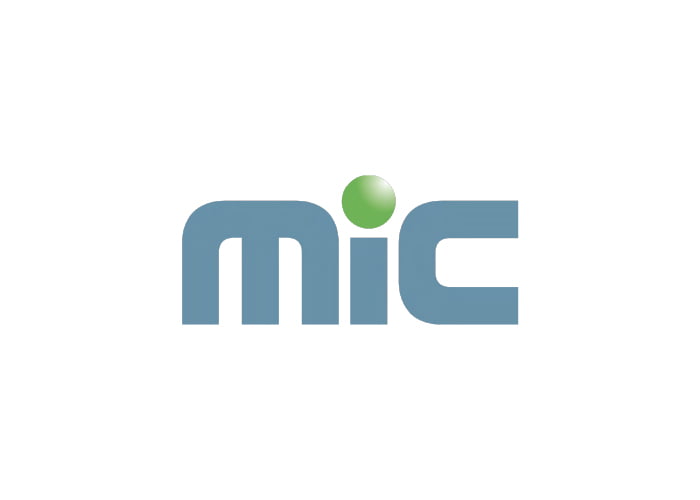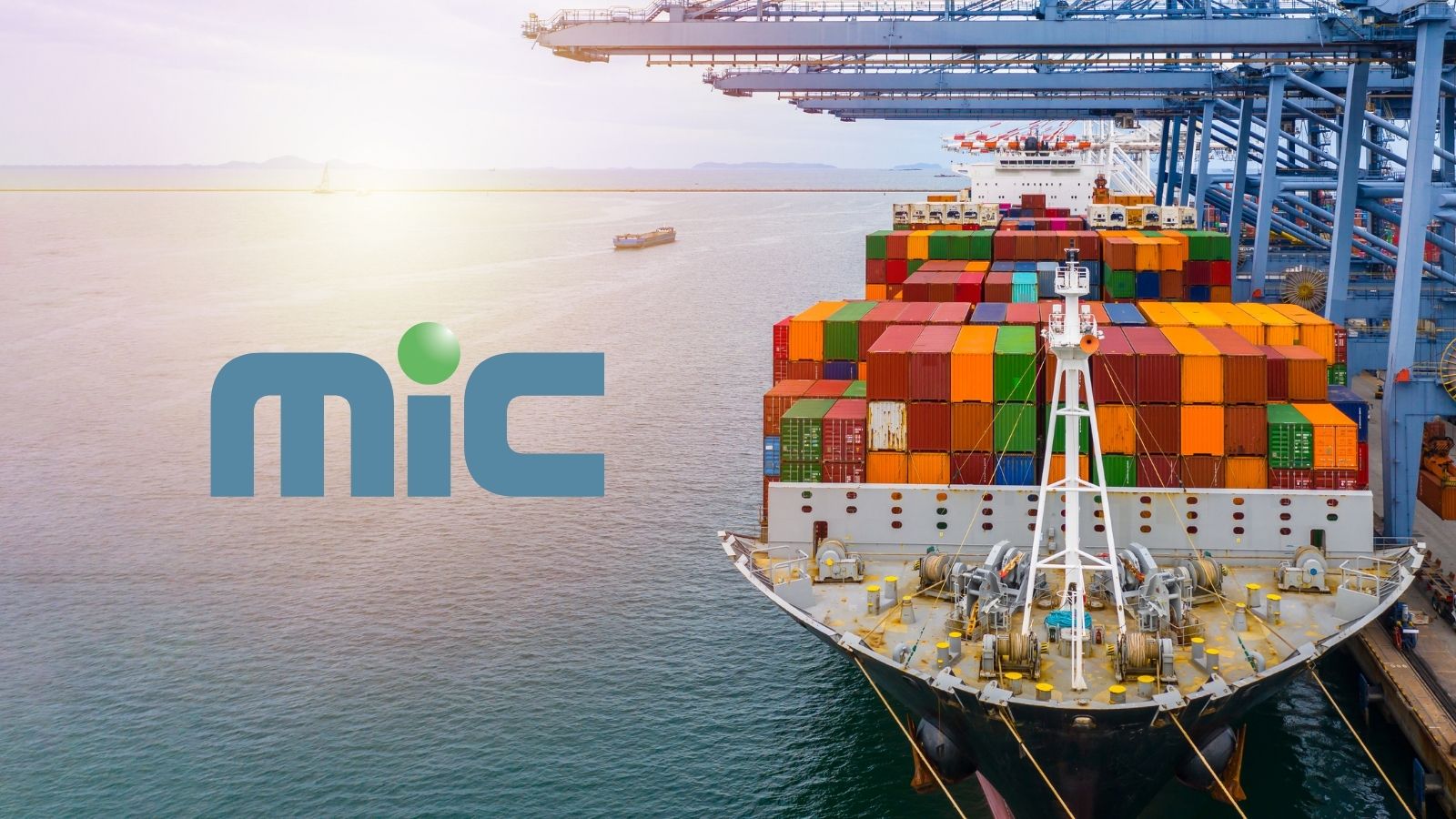In an era of rapid globalisation, the landscape of customs and trade compliance is undergoing a profound transformation. At the forefront of this evolution stands MIC Customs Solutions, a trusted partner in customs automation and global trade management. In a recent interview at the Customs Compliance in the UK Conference, Mr. Philip Trouwen, Senior Sales Manager BE + FR at MIC, shed light on the challenges facing modern businesses and how MIC’s software solution is revolutionising customs and trade management. Let’s dive into the insights shared by Philip, offering a glimpse into the future of global trade facilitation.
Nielsonsmith: Philip, it’s great to have you back here at Nielsonsmith. We’ve been working with MIC for over 10 years now, and it’s always a pleasure to collaborate with you.
Philip: Yes, it’s been more than a decade of partnership, and we’re equally delighted to continue working with you.
Nielsonsmith: Thank you for being here, Philip. Could you introduce yourself to our readers?
Philip: Of course. My name is Philip Trouwen, and I’ve served as a senior sales manager at MIC for over 10 years. Initially, I spent about 20 years in the brokerage sector before transitioning to the IT department. I noticed a growing trend among companies to automate their processes, prompting my shift. I’ve witnessed firsthand the increasing emphasis on automation in modern businesses.
Nielsonsmith: Excellent. Let’s dive into our questions.
Philip: Agreed.
Nielsonsmith: Could you shed some light on the challenges faced by multinational companies today and how MIC assists them?
Philip: Absolutely. In the past, companies operated as local entities, managing their customs processes internally. However, with globalisation, companies have evolved into multinational entities. They now seek enhanced visibility, transparency, and structured processes, including compliance measures. Addressing these needs requires robust solutions. Larger organisations, in particular, struggle with high volumes and complex processes. MIC steps in to offer tailored solutions that streamline supply chain visibility, customs procedures, trade compliance, and export controls. Our aim is to provide value by configuring SaaS solutions to meet these evolving demands.

MIC – Managing International Customs & Trade Compliance
Nielsonsmith: Could you provide an overview of MIC’s customs software solutions and the role they play in the customs and trade industry?
Philip: MIC is a family-owned company, highly esteemed by our customers for our exclusive focus on customs and trade compliance – it’s our sole specialisation. We employ over 550 dedicated professionals solely focused on customs and trade. We have three main pillars: Customs Compliance, Customs Classification, and Origin Management.
Our Customs Classification module allows companies to automate their classification processes for exports and imports to any country worldwide. We integrate artificial intelligence and machine learning to automate classification tasks, leveraging techniques such as image recognition to assist customs and trade compliance teams.
Additionally, our Origin Management solution facilitates the solicitation of origin information from suppliers and calculates preferential and non-preferential origin statuses. This data management capability, combined with up-to-date bill of materials, empowers our customers with pricing insights and revenue projections, aiding their go-to-market strategies. Our Customs Filing solution, compliant with World Customs Organisation standards, supports various customs procedures like import/export, bonded warehouse, and IPR/OPR. We aim for connectivity with customs authorities across multiple countries, allowing centralised filing processes for different operating plants.
Furthermore, our Export Control Management module ensures compliance with regulations by conducting sanctioned party screenings and Ultimate Beneficiary Owner (UBO) screenings, preventing transactions with prohibited entities or destinations. For instance, it screens against entities associated with sanctioned individuals like friends of Putin or transactions subject to specific country legislations, such as transactions in Chinese currency bound for China or Sudan.
Lastly, our Data and Ethics tool and visualisation, launched three years ago, enables comprehensive data analysis and anomaly detection to ensure ethical data usage and integrity.
Nielsonsmith: It sounds like a very sophisticated system.
Philip: Indeed.
Nielsonsmith: Next, could you discuss the role of technology in compliance and customs and trade management?

Philip: Certainly. When dealing with diverse processes across different regions worldwide, technology becomes indispensable for automating these processes. ERP systems, production systems, and lifecycle systems are in place, each generating crucial data required for compliant processes. Technology acts as the interface between these systems, facilitating communication so that the necessary information is triggered and utilised at the appropriate moments, such as in customs declarations and origin calculations. For instance, when there’s a change in any component within a bill of materials, the system triggers a recalculation to ensure the maintenance of preferential origin status. Similarly, an address change from a supplier may prompt the system to reevaluate for potential matches against sanctioned party lists. These triggers are entirely driven by technology, ensuring proactive compliance management.
Nielsonsmith: All right, thank you. So, what would you say sets MIC apart from other solution providers?
Philip: That’s a great question. It’s often challenging to articulate, but what we aim to do is provide a level of automation that truly adds value. Automation can mean different things to different people, but for us, it means streamlining processes to the point where human intervention is minimal. For example, our export process is entirely automated, requiring no human involvement. We have clients managing 600,000 customs classifications annually with just a few staff members. How? Because our automation mechanisms support their workflow by triggering and executing data processes efficiently. This level of automation is what distinguishes MIC from other solutions in the market.
Nielsonsmith: Thank you, Philip. Now, how does MIC tailor their solutions to different corporate structures?
Philip: The MIC solution is specifically designed to support larger multinational organisations. What we do is collaborate closely with these organisations to understand their unique operational flows. This involves examining their supplier relationships, customer interactions, product movements, market dynamics, production processes, distribution channels, and more. We then configure our solution to accommodate each individual entity or plant within the organisation. This ensures that when one part of the organisation initiates a process, various interconnected processes are triggered in the background, facilitating seamless operations. This interconnectedness and automation of processes across the organisation is what we refer to as the automation of trade.
Nielsonsmith: Could you share some examples of the industry sectors where MIC software solutions have been particularly effective?
Philip: Certainly. MIC is well-known in the technology sector, and we also cater to e-commerce. Our portfolio includes several prominent e-commerce companies and retailers. Additionally, we have established ourselves as the leading solution provider in the automotive sector, globally. However, beyond automotive, we are witnessing a significant increase in demand from tier 1, tier 2, and tier 3 suppliers who are keen to automate their processes and optimise their supply chains to realise a return on investment.
Nielsonsmith: Great, thank you. Now, how does MIC ensure transparency and minimise risks for customers?
Philip: Transparency is inherent in MIC software solutions. We provide a unified database and user interface, offering a single system accessible globally. Whether accessed in the US, China, Australia, or Europe, users interact with the same data, ensuring complete visibility into the process. Our system maintains a comprehensive audit trail, documenting every action taken by both humans and machines, including interfaces triggering processes. This creates transparency and visibility throughout the system. Additionally, it’s a role-based solution, meaning everyone with access can see pertinent information. Given the increasing importance of IT security, safeguarding data integrity is also a top priority for us.
Nielsonsmith: What kind of support and maintenance services does MIC provide for its customers?
Philip: MIC offers various types of support services. Typically, we provide second and third-level application support. Our customers are often structured with different regional support centres or service excellence centres, and we maintain close communication with them. Our second and third-level application support teams are organised to cater to specific customers, regions, or processes. This structure ensures a rapid response when interaction between the customer system and MIC is needed due to our high level of integration. To meet our customers’ demands for 24/7 support, we have support offices strategically located in Europe, the US (both East and West coasts), Mexico, and Bangkok, Thailand. This allows us to offer round-the-clock support, 365 days a year, ensuring we can promptly address their needs.
Nielsonsmith: How does MIC stay up to date with the ever-evolving customs and trade compliance?
Philip: The way we’re organised involves having different modules, each with a designated ‘process owner’ and ‘product owner’. Particularly for our Customs filing solution, we operate in a legal landscape that undergoes constant change. For every module, we have individuals responsible for monitoring legal developments. For instance, if we’re supporting a customer with our Customs solution in Poland, we have someone dedicated to attending Customs meetings and tracking legal changes. Their role is not only to monitor but also to proactively alert our development teams about impending legal changes, enabling them to adapt our software accordingly. There’s also an analysis to determine if these changes will impact our software or our customers’ processes. This information is shared internally with our development and support teams. The support teams, in turn, communicate with customers, holding regular quarterly meetings to discuss upcoming changes and their implications. This ensures that both internally and externally, everyone is informed and prepared. Additionally, every legal change is part of our maintenance contract and included therein, providing our customers with assurance and reliability in staying compliant.
Nielsonsmith: The next question is: What trends do you see in the future in customs and trade compliance, and how is MIC preparing for those changes?
Philip: Well, one of the most significant trends we’re witnessing, which is prominently featured in the news, is the adoption of artificial intelligence and machine learning. At MIC, we have a dedicated Data Science team specifically focused on leveraging these technologies. For instance, they’ve developed a module that utilises machine learning for customs classifications. This involves analysing millions of photos, extracting text from various sources including customs BTIs, and using this data to automate classifications. This is just one example; we’re exploring how to apply machine learning to other processes such as customs filing and interactive reporting. The goal is to enhance existing processes with new technologies. Establishing this specialised team underscores our commitment to staying at the forefront of these developments. There are concerns among some about job displacement, but our stance is that these technologies should augment and streamline tasks, not replace human input entirely. Many companies still rely heavily on manual processes like Excel or Email, which consume unnecessary time and resources. AI and machine learning can alleviate these burdens, allowing professionals to focus more on strategic customs and trade management tasks.
Nielsonsmith: Completely agree with you, Philip. Now, could you share some success stories and case studies where MIC software solutions made a significant impact?
Philip: Every story we have is a success story, that’s the key. We have customers who process 1.5 million lines in their declarations daily, all through fully automated processes. This includes creating export declarations that are then converted into import declarations for the destination country. Such process automation significantly reduces lead times for our customers. In our preferential origin calculation process, we utilise both top-down and bottom-up approaches, which we term advantage calculations. By combining the strengths of both methods, we’ve seen examples where our customers increased their preference level by over 25%. This boost in preference level translates to increased competitiveness and market share for our customers. We have multiple examples of such successes.
Nielsonsmith: How does MIC approach partnerships and collaborations within customs and trade compliance communities?
Philip: The trade compliance community is relatively small and tightly knit. To engage with this community, we focus on two main strategies. Firstly, we aim to increase visibility through partnerships, such as with Nielsonsmith. These partnerships allow us to actively participate in conferences where there are interactive discussions among attendees. It’s an opportunity for us to share our knowledge and experiences while also learning from others. Additionally, we host webinars where participants can learn about how our customers are successfully automating their processes, sharing best practices and insights. We believe these initiatives are crucial for fostering discussions and addressing relevant topics within the market.
Nielsonsmith: And the final question is, for you personally, what excites you the most about the future of customs and trade compliance?
Philip: What excites me the most is seeing how we can contribute to automation for our customers and witnessing the tangible impact it has on their market share. Delivering on our promise of added value to our customers is incredibly fulfilling for me. Additionally, observing the evolving global landscape, such as developments in China, the growth of the electric vehicle industry, fluctuations in material availability, and ongoing trade negotiations, underscores the complexity of the challenges facing companies today. These factors ensure that there will be great opportunities for us to continue providing valuable solutions and services in the customs and trade compliance space for the foreseeable future.
Nielsonsmith: Thank you so much, Philip, for sharing your knowledge and insights. I’m sure our readers have found this information incredibly useful and insightful.

Mr. Philip Trouwen,
Senior Sales Manager Benelux, France & UK, MIC Customs Solutions
Philip is for 10 years with MIC and brings 25 years of in-depth experience in the Global Trade Market. He started as a declarant, managing complex Pan-European customs processes for large multinational companies. His expertise reaches from Export Control, Classification, Origin Management & FTA’s to Intrastat and more. His profound professional experience in customs & compliance enables Philip to identify customers’ individual needs for MIC’s GTM solutions.
